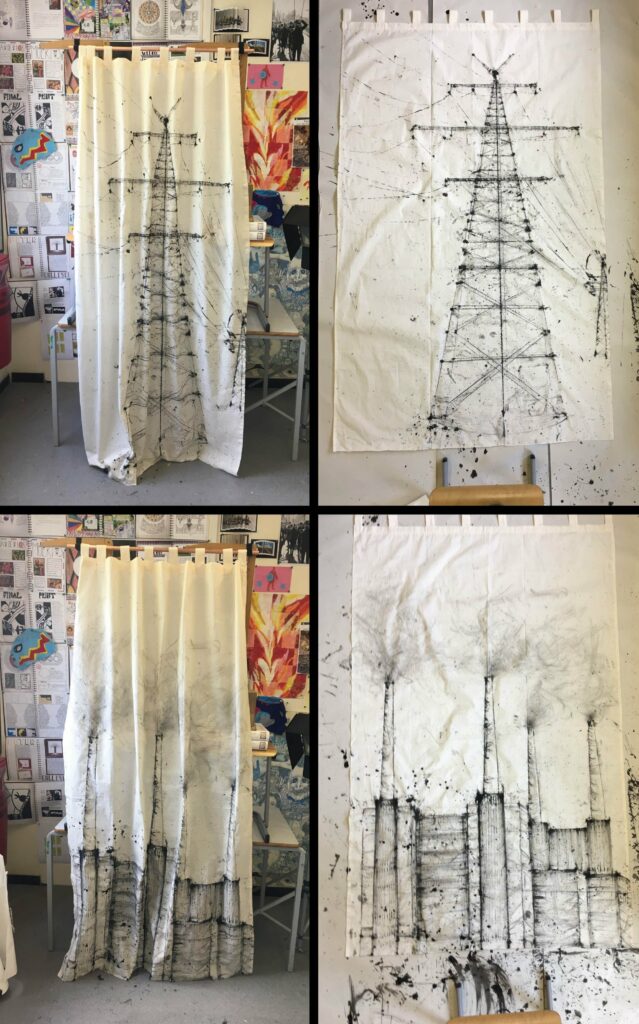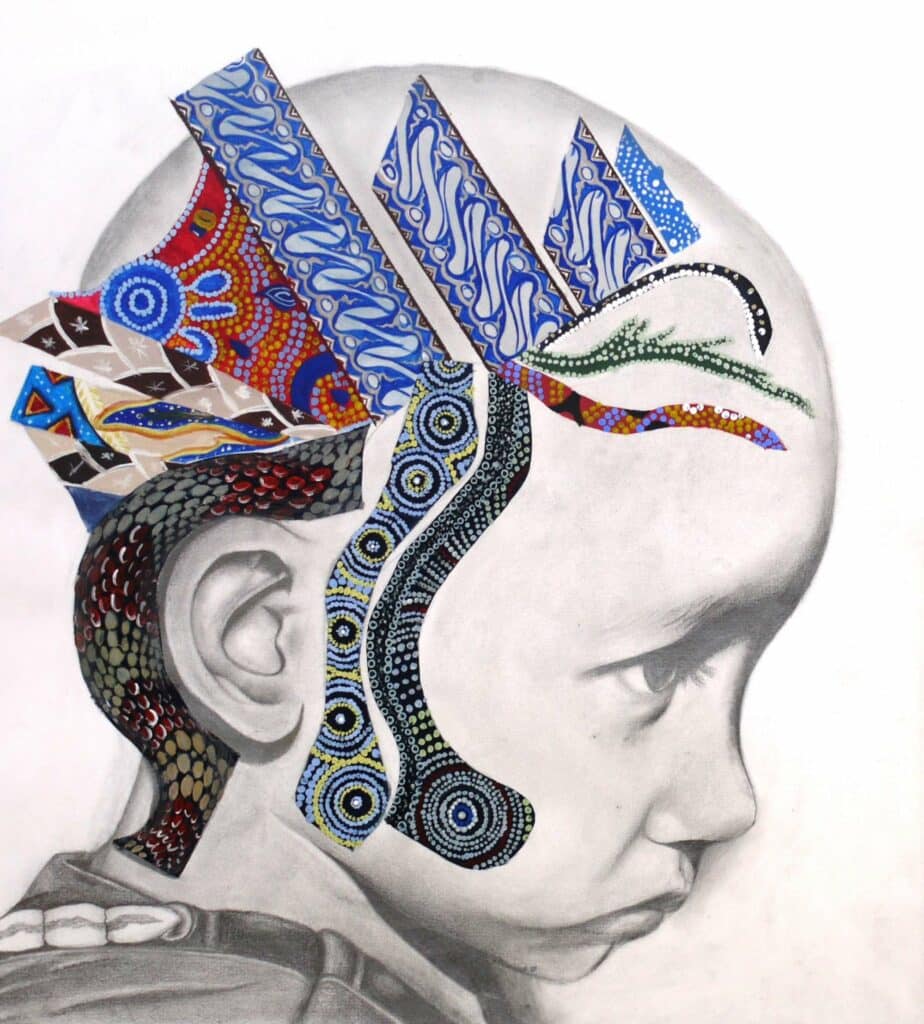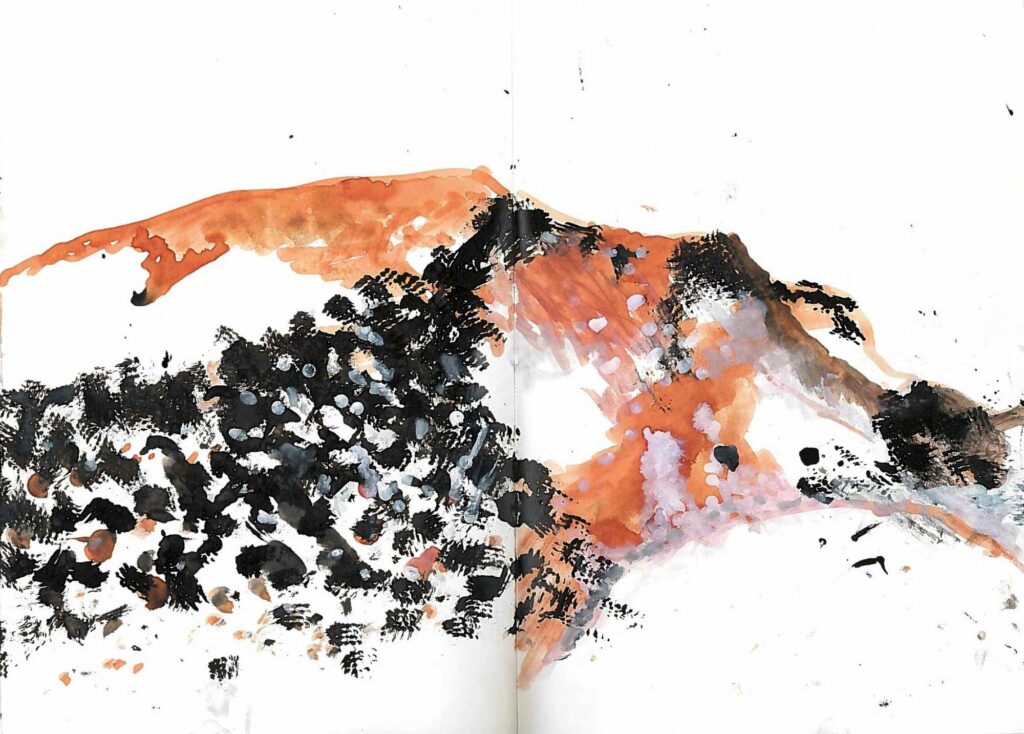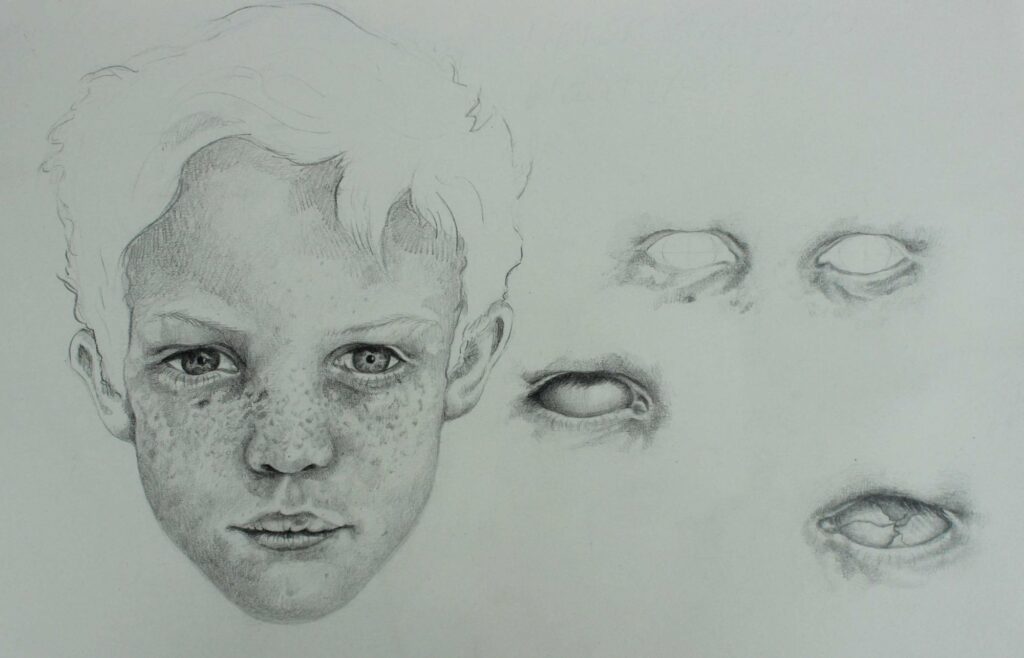Notes on the 2017 Summer School
– Nana Biamah-Ofosu and Bushra Mohamed

Drawing, Making, Thinking
‘Working in philosophy, like work in architecture in many respects,
is really more a working on oneself.
On one’s own interpretation.
On one’s way of seeing things,
(and what one expects of them).’
Ludwig Wittgenstein, Diary, 1931
Nana Biamah-Ofosu: In Wittgenstein’s words I recognise my own pursuit of architecture. The practice of, the making and the thinking about architecture are less about grandeur and spectacle than about the everyday and the understanding of our world – the places we grew up and the cities we inhabit. It is about learning to see, understand and (re)interpret. The summer school, with its focus on drawing, thinking and making, through the process of refining and imagining, embodies for me the practice of architecture: it is a continuous and iterative process that calls us to look with intent and rigour, and to cultivate an understanding of the spaces we inhabit.
In drawing one records what one sees but also, importantly, how one sees. It is at once a recording and an act of imagination. What we choose to draw – to include or eliminate – reveals something about how we see the world. Through the summer school, I hope that it becomes apparent to the students that the act of drawing and making has no fixed formula; it is a matter of personal interpretation and what our individual pursuits, interests and interpretations contribute to the collective narrative of architecture. I hope that through looking, seeing, drawing and ultimately proposing, the students will form an understanding of the spaces they visit and occupy.
‘Making is thinking.’
Richard Sennett
Bushra Mohamed: Before I was interested in architecture, I was interested in drawing. Drawing is a learned skill and a craft, a physical act of making that can be developed over time through practice and study. Combining these with talent and determination you can foster an approach that allows the hand to act as a window into the mind.
I aim to instil the importance of cultivating ‘an intelligent hand’. This phrase describes precisely a latent knowledge of the world, which manifests physically through the hand. A mark made, an image captured, a model formed, a piece written in order to enrich the world with imagination, resourcefulness, humour and pathos. The process of capturing ideas through drawing leads to a habitual understanding, which has an ingrained accuracy. This habit is your craft, and it needs cultivating. However, the ways creative work gets done are unpredictable: it demands room to roam, it cannot be reduced to replicable formulas. Nevertheless, one can acquire a process of thinking and a method of producing. This is what I aspire to teach.
I hope for a return to a fully embodied design process in which knowledge and experience are fully assimilated within the designer, and returned through touch, gesture, habit and intuition. Your craft results in creations that adhere to an overall specification but also have a degree of variability in them. This variability is what we seek to capture and expose.

Architectural Education
NBO: The process of architecture is energised by continued learning and reflection. It requires us to be open to new ideas and ways of thinking. In my education and in practice, what I have always found most exciting is the potential for discovery and building upon knowledge. Architecture is rarely about a single figure but rather the collective and an ethos of collaboration. We work with others – with engineers, theorists, artists and makers – learning from them, hoping to enrich the design process and share knowledge and skills. This ethos of collaboration also applies to architectural teaching. The experience of teaching will ultimately be one of learning, through conversations and the exchange of knowledge and ideas. We are all students.
BM: There is an intrinsic link between architectural education and practice. The practitioner never stops learning. An architect’s education is continual and responds to the changing world in which we live: new technologies, the lack or abundance of materials and the places in which we build. Without continual research and experimentation we would not unlock the full breadth of solutions our imaginations hold for us. Therefore the dialogue between education and practice is critical in holding contemporary architecture accountable; it helps push the profession forward. As you grow in knowledge and experience, you have to work harder to retain a sense of wonderment and boldness.
Through a series of workshops, we will be looking, seeing, dreaming, engaging and making, with the aim of cultivating an approach to drawing that trains the mind to be bold, encourages rigour, imperfection, experimentation, joy and a lust for ideas: ultimately, to reinforce the importance of creating a narrative between what you see, how you see it, and what is expressed through drawing.

The Selection Process
NBO: In selecting students for the summer school we were encouraged by the quality of applications. The portfolios and written statements allowed us to tease out the interests and ambitions of each applicant. The selected students showed a great deal of exploration and experimentation in their work. In their portfolios they went beyond mere image-making, to seek the essence of the subjects they were interrogating. Each student showed a sensibility in developing their own narrative and interests, and in many pieces I found an observer who was trying to capture something about the subject matter that they were perhaps intrigued by or did not yet fully understand. This sense of exploration is refreshing and something we hope to build on throughout the summer school.
BM: I approached the selection process with the desire to judge solely on talent and ability. However, I discovered that identifying a latent and intuitive ability was immensely challenging. The quality of all the submissions was extremely impressive. The energy expressed was refreshing and exciting to see, and suggests a promising summer school ahead. Through transparent conversations with the tutors and the Royal Fine Art Commission Trust, we decided that what distinguished the chosen students was their ability to engage with subject matter. This exposed their ability to create a personal narrative between the subject matter and their experiences, allowing us to get a sense of how they observe the world. Every student chosen to partake in the summer school undoubtedly has potential – through training and continuous practice you will hone this potential, develop your technique and master your talent.

The Fragment
NBO: In proposing the fragment as a point of departure for the summer school, we hope to encourage students to respond to the theme in a way that embodies their own narratives and interests. The fragment, in some ways, is similar to the process of drawing; it is never about a singular object, and requires our own interpretations to form a whole. In the broken spaces between, we are able to imagine, envisage and reinterpret. We hope to encourage students, through a series of walks and workshops, to embrace this idea of seeing the city as a fragment, as a piece of human and cultural history, and explore how their own narratives and interventions may sit within this continuous ensemble.

– Andrew Clancy